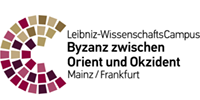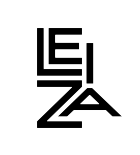The earliest mosques: looking at the first three centuries of Islam
Mosques are an important feature of Muslim faith in the present and the past. When searching for physical evidence for Islam in the first centuries of the Hijra (ca. 7th to 9th century CE), mosques are one main type of evidence. It therefore comes with no surprise that these spaces have received much attention from both archaeologists and art historians. Some researchers document structures through excavation or survey while others interpret and reconstruct the forms of mosques according to the later narrative sources (e.g. chronicles). Up to this day, hundreds of mosques dated to the first centuries AH have been identified from Spain and Morocco to Egypt, Kenya, Saudi Arabia, Iraq, Iran, Afghanistan, and China. These mosques, at least in theory, represent Muslims. The assemblage of these mosques thus symbolizes a wide spread of Islam as a culture and/or religion. However, the dataset that forms the basis of the image of a widespread Islam is unstable at best. Dating mosques with relative precision is the most crucial element for later interpretations but also a challenging one. A common practice in the field is to identify mosques that are mentioned in Arabic literature of the 9th to the 15th centuries with actual remains. It is also costumed, in a second stage, to project the narratives on the physical evidence. In other words, whereas the archaeological or architectural evidence is perceived as independent and is assumed to provide a counterbalance for the historical narratives, it in fact relies heavily on them. Instead of two sets of evidence – textual and physical – and two independent sets of dates, we end up with a circular argumentation based on the literary sources. Reading anew the archaeological records of these mosques draws a very different picture.
As part of the first phase of this research (funded by the European Union’s Horizon 2020 research and innovation programme under the Marie Skłodowska-Curie grant agreement No 801505I), a database of mosques was published online. The database includes allegedly 7th-9th-century mosques which were excavated or related to an excavation project and were published. Primarily analyses of these data suggest an early distribution in the 8th century in the Levant and the Arabian Peninsula and a broader distribution in the 9th century. Contemporary inscriptions and papyri with relevant terminology (e.g. mentioning the term masjid) support these chronological and geographical patterns. A parallel analysis of the narrative sources from the 8th to the 10th century shows shifts in relevant terminology and the growing details in descriptions of mosques with time. The second phase of the research will focus on further analyses and on interpretation. This comprises looking for terminology in additional sources (Qurʾān manuscripts and in non-Muslim texts), analyzing the typology of structures, and trying to tackle the question of cities and mosques and of shared spaces. This study contributes to a better understanding of each of the first centuries of Islam. In addition, it shows the gap between the ‘truths’ of the textual and physical evidence and demonstrates the importance of contextual examinations.













